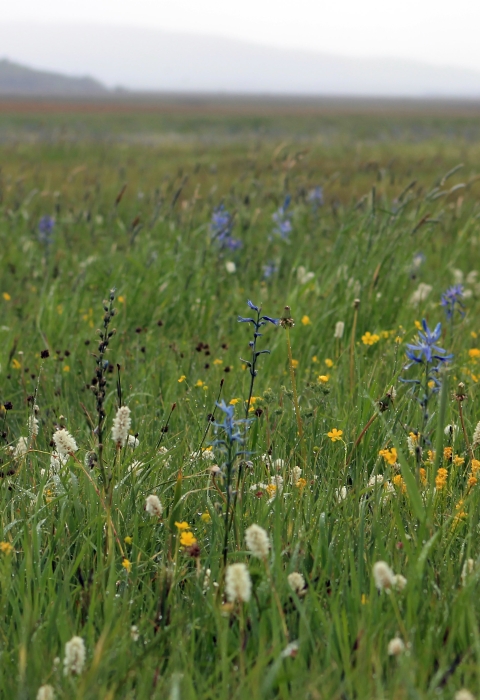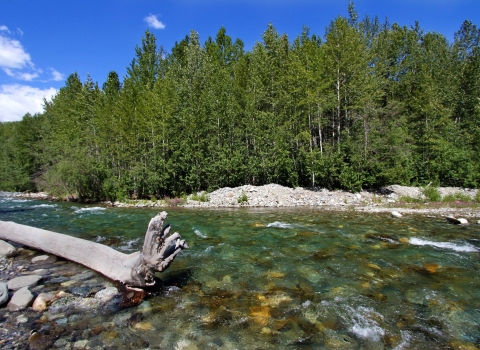WASHINGTON – The Department of the Interior today announced that more than $50.6 million in funding has been approved by the Migratory Bird Conservation Commission, providing the U.S. Fish and Wildlife Service and its partners the ability to help conserve, restore or enhance more than 106,600 acres of wetlands and associated upland habitats for waterfowl, shorebirds and other birds across the United States.
The Commission approved more than $39.4 million in North American Wetlands Conservation Act (NAWCA) grants that will be matched by more than $74.1 million in partner funds. In addition, the Commission approved $11.24 million from the Migratory Bird Conservation Fund to conserve land on two national wildlife refuges. The acquisitions will expand public opportunities for hunting, fishing, wildlife observation and outdoor recreational access.
“Each of us has a stake in the health of wildlife and wetlands across our country. But protecting them takes collaboration, communication and a steadfast commitment to the local communities who know and depend on these places,” said Secretary Deb Haaland. “The funding announced today will help support the Biden-Harris administration’s America the Beautiful initiative, which is focused on pursuing locally led, collaborative and inclusive efforts to conserve, connect and restore America’s lands and waters.”
“Wetlands provide migratory birds valuable stopover sites for resting, nesting and breeding. They also support biodiversity, help with water quality and protect coastal communities from flooding and rising seas,” said Service Director Martha Williams. “NAWCA grants increase bird populations and wetland habitat while benefiting local economies and offering recreational opportunities, such as hunting, fishing and birdwatching.”
The Migratory Bird Conservation Commission is chaired by Secretary Haaland and authorized under NAWCA. The Commission has helped conserve much of the nation’s most important waterfowl habitat and establish or enhance many of the country’s most popular destinations for waterfowl hunting and birding. Since 1991, more than $2.1 billion in funds, matched by more than $4.3 billion in partner funds, have been approved by the Commission, totaling $6.4 billion for wetland conservation.
North American Wetlands Conservation Act
NAWCA is the only federal grant program dedicated to the conservation of wetland habitats for migratory birds. Since 1989, funding has advanced the conservation of wetland habitats and their wildlife in all 50 U.S. states, Canada and Mexico, while engaging more than 6,800 partners in over 3,300 projects. Through NAWCA, federal funds are typically leveraged at twice the legally required dollar-for-dollar non-federal match-to-grant ratio.
The new NAWCA funding approved today will benefit 12 Endangered Species Act (ESA) listed species, as well as 78 species listed as Birds of Conservation Concern, which helps prevent species from being listed. Throughout the year, the Department is celebrating the importance of the ESA in preventing the extinction of imperiled species, promoting the recovery of wildlife and conserving the habitats upon which they depend. The ESA has been highly effective and is credited with saving 99% of listed species from extinction.
The Commission also received a report on 22 NAWCA small grants, which were approved by the North American Wetlands Conservation Council in February 2023. Small grants are awarded for projects up to $100,000 to encourage new grantees and partners to carry out smaller-scale conservation work. The Commission has authorized the Council to approve these projects up to $5 million. This year, more than $2 million in grants was matched by $6.1 million in partner funds.
Partners in NAWCA projects include private landowners, state and local governments, Tribes, conservation organizations, sportsmen’s groups, land trusts and corporations. More information on these NAWCA grants is available on the Service’s website.
Migratory Bird Conservation Fund
The funding announced today to conserve 2,942 acres for two national wildlife refuges through the Migratory Bird Conservation Fund was derived primarily from the sale of Federal Migratory Bird Hunting and Conservation Stamps, commonly known as Duck Stamps, and import duties. Since 1934, the Federal Duck Stamp Program has provided more than $1.2 billion for habitat conservation in the National Wildlife Refuge System.
These funds will be used to purchase waterfowl habitat at the following national wildlife refuges:
- Grays Lake National Wildlife Refuge in Idaho – $6,240,000 to acquire 2,496 acres.
- Cape Romain National Wildlife Refuge in South Carolina – $5,000,000 to acquire 446 acres.
While Duck Stamps are required for waterfowl hunters as an annual license, anyone can contribute to conservation by buying them. A current Federal Duck Stamp is also a pass into any national wildlife refuge national wildlife refuge
A national wildlife refuge is typically a contiguous area of land and water managed by the U.S. Fish and Wildlife Service for the conservation and, where appropriate, restoration of fish, wildlife and plant resources and their habitats for the benefit of present and future generations of Americans.
Learn more about national wildlife refuge that charges an entry fee.
Additional information about North American wetlands and migratory bird conservation can be found on the Service’s Migratory Bird Program web page.

